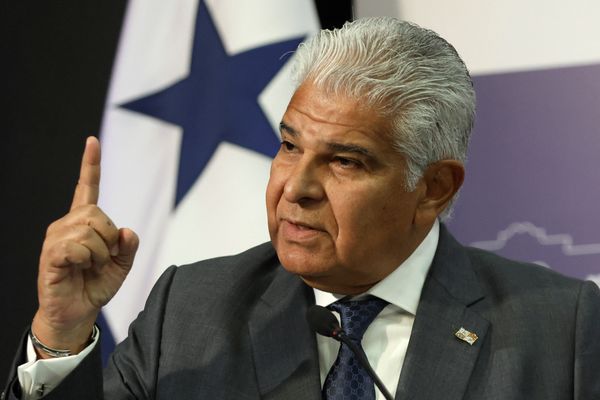
Last July, I proposed in these pages that the world’s advanced economies were entering a new age: the age of magic money. Because inflation seemed dormant, central banks faced no penalty for conjuring money out of thin air. And because this money would drive interest rates lower, governments would likewise face no penalty for borrowing—indeed, payments on the national debt might actually fall even as the debt stock mounted. A period of expansive government beckoned, as magic money enabled a boom in public spending.
A year later, this shift has advanced at such a speed that it risks self-incineration. Central banks have created money at a rate that makes the response to the global financial crisis look timid. Governments in rich countries have borrowed on a scale unprecedented in peacetime. Those with credible national central banks have pushed this experiment furthest. This year, Canada, Japan, and the United Kingdom are forecast to run budget deficits of 9.0 percent, 8.9 percent, and 11.5 percent of GDP, respectively. The United States, empowered by its position as the issuer of the world’s reserve currency, is projected to run a budget deficit worth a remarkable 13.5 percent of GDP.
Inevitably, this gargantuan U.S. stimulus has rekindled fears of inflation. The surge in government spending is coming on top of a surge in private indulgence: deprived of opportunities to splash out during the COVID-19 lockdown, consumers are sitting on savings and keen to enjoy themselves. But buoyant demand is hitting sluggish supply. Businesses that were mothballed during the lockdown take time to reopen; workers who were sheltering at home are cautious about venturing out again. Resurgent demand plus constrained supply has had a predictable result. The Federal Reserve’s favorite inflation measure—the core Personal Consumption Expenditures (PCE) index, which excludes the volatile prices of food and energy—is running at 3.4 percent, the highest since the early 1990s.
What does this inflation mean for the age of magic money? If inflation is staging a comeback, will what I billed as an era have been a mere moment? Among economists and financial analysts, answers to these questions have taken the form of three basic predictions about what might happen to inflation next. Only one of those predictions suggests that the magic has faded—and it is the least likely of the three to come true.
ONE HAT, MANY RABBITS
According to the most pessimistic of the three predictions, today’s inflationary surge will prove durable, and the Federal Reserve will respond to it belatedly. In this scenario, the Fed, after a period of dithering, will wake up to the reality that it has let inflation break out and will raise interest rates with a vengeance, as it did under the Fed chair Paul Volcker in 1979. When that happens, budget authorities, facing higher debt payments, will have to cut their deficits, and indebted businesses and households will go bust. The economy will plunge into recession, financial markets will crater, and the age of magic money will have been exposed as merely a fit of recklessness.
Happily, however, the other two commonly discussed scenarios are far likelier. One is propounded by the Fed itself and accepted by the bond market and most forecasters. This holds that the current bout of inflation will prove transitory. The recent jump in prices reflects so-called base effects: at the start of the pandemic, the economy seized up and prices fell to artificial lows; today’s jump from a low base is merely a return to normal. Moreover, where price jumps do not reflect these base effects, they will prove transitory for a different reason: they are caused by supply constraints that are themselves transitory. As time passes and more people get vaccinated against the virus that causes COVID-19, businesses will get back up to speed. Workers will feel confident about returning to jobs. The expiration of the $300 per week supplement to unemployment insurance will make work more attractive and the labor supply more plentiful.
One way to distinguish between temporary and durable inflation is to strip out the effects of idiosyncratic disruptions. Lately, for example, a global dearth of semiconductors has caused shortages and price spikes in a range of goods, notably automobiles. But chipmakers are scrambling to catch up to demand, so this bottleneck is likely to prove temporary. To gauge the significance of such ephemeral bottlenecks, the economist Jan Hatzius of Goldman Sachs has compared the Fed’s core inflation measure to a “trimmed” index that excludes the most extreme month-to-month moves. Not only is trimmed inflation remarkably stable—it is running at 1.6 percent—but the gap between it and the core PCE index is the widest it has been in 25 years.
At least for now, inflation does indeed seem transitory. This means that the Fed can keep most of its stimulus in place and that governments can continue to run budget deficits. But of course there is a possibility that this might change: that today’s temporary and unthreatening inflation could morph into a more serious enemy. The infamous Great Inflation of the 1970s started off as a mild upward drift in prices in the late 1960s that was then exacerbated by the oil shocks of 1973 and 1979. Today, a similar shock might come from an intensification of the standoff between the United States and China, which could lead to a Chinese embargo on key industrial inputs—rare earths, for example, the global supply of which is dominated by China.
For now, inflation does indeed seem transitory. But today’s unthreatening inflation could morph into a more serious enemy.
There is, finally, a third prediction of how inflation might play out. As in the first scenario, inflation would prove more than temporary. But unlike the first scenario, in this one, the Fed responds competently. Because it avoids procrastination, it is able to contain inflation without panicking. Instead, it withdraws its stimulus gradually, never resorting to an abrupt interest-rate hike; rather than crashing into a recession, the economy experiences a soft landing. In this scenario, the burst of magic money of 2020–21 will have rescued the pandemic-hit economy without creating trouble down the road. And when the next crisis comes, the magicians will unsheathe their wands again.
This third story, like the second one, is more plausible by far than the end-of-magic scenario. To assume that a procrastinating central bank will bungle today’s challenge is to ignore the shift in messaging that took place on June 16, when the Fed reported that several of its policymakers had moved their predictions of when they would vote to raise interest rates forward, from 2024 to 2023. The bungling-Fed theory also flies in the face of the past four decades of evidence. Since Volcker’s tenure, the Fed has steered the nation through financial crises, a dot-com bubble, a subprime mortgage crash, and populist threats from the likes of former President Donald Trump. It has emerged with inflation more or less stable, its independence intact, and the dollar still on its throne as the world’s dominant reserve currency. The Fed is among the most impressive technocratic institutions in the world. It seems perverse to bet on its incompetence.
Moreover, the belief that the Fed will procrastinate misconstrues the nature of its adversary. The type of inflation that matters—the sort that embeds itself in business behavior and consumer psychology—takes hold over time. It is a chronic disease, not an acute one. It took more than a decade for the Great Inflation to come to a boil. Likewise, today’s low-inflation climate has its roots in the disinflation of the 1990s: it has been a quarter of a century in the making. To repeat the disaster of the Great Inflation, the Fed’s response would have to be a few years too late, not just a few months.
LESSONS LEARNED
This is why today’s most popular—and reasonable—criticism of the Fed should not be built into a scare story about a return to the 1970s. Today’s critics point to last year’s policy revamp, in which the Fed abandoned its simple two percent inflation target in favor of a pledge to target an “average rate” of two percent. The new policy is vague: the Fed has left unclear the period over which it will calculate this average and has further muddied the picture by also promising to target “maximum” employment. But although this squishy framework may set the Fed up to delay acting against inflation by a few weeks or a few months, this is a modest problem.
To understand what a real problem might look like, consider a famous speech by Arthur Burns, who presided over the Fed from 1970 to 1978. A year after stepping down, Burns addressed the question of how the Great Inflation happened. “The Federal Reserve System had the power to abort the inflation at its incipient stage 15 years ago,” he confessed—“or at any later point,” he added. Yet it had failed to do so—repeatedly, over a span of a decade and a half—because it fundamentally did not believe that fighting inflation was a critical mission. The central bank, as Burns put it, was “caught up in the philosophic and political currents that were transforming American life.” The political classes were outright hostile to tough policy from the Fed, and many economists argued that the cost of fighting inflation would exceed the benefit. Because there was neither a political nor an intellectual consensus in favor of higher interest rates, Burns had let inflation build. Thanks to the constraints imposed by the Zeitgeist, the Fed was omnipotent in principle but impotent in practice.
Whatever critics say about today’s Federal Reserve, the United States of 2021 is a long way from the United States of the 1970s. The Biden administration—whose most senior economic official, Treasury Secretary Janet Yellen, is also a former Fed chair—has no intention of bullying the central bank or doubting the importance of containing inflation. The political consensus values price stability, and modern financial markets would immediately telegraph alarm if the Fed fell down on its responsibility. In a cynical political culture, observers are quick to declare that a powerful governmental institution is likely to commit some gross error. Contrary to what pundits often assume, cynicism is not the same as wisdom.
The age of magic money is upon us because the Fed has spent four decades building credibility. People all over the world trust it to print extraordinary amounts of money without letting inflation destroy the value of that money. It is often hard to believe that it works—and yet it does.







